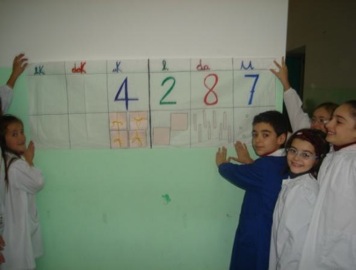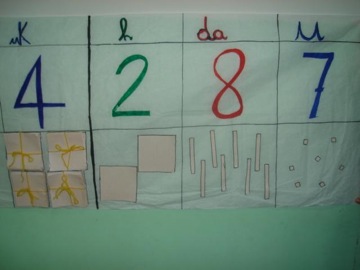

8° circolo didattico - Brindisi
Primary school “E. De Amicis” - Tuturano
Age:
9-10 years
Lesson1: |
Aims:
- To be aware of the use of numbers in everyday life.
- Reading and writing numbers greater than 1000.
Materials:
Computer, PC game on a CD, chalk and blackboard.
Introducció:
In previous years pupils have done many activities related to numbers and base 10, using specific materials and representing the numbers with drawings and symbols. This year, we have used a video game to continue our study and at the same time keep the pupils motivated. Many of these games involve adding up results which are often expressed in numbers with 3 or more digits.
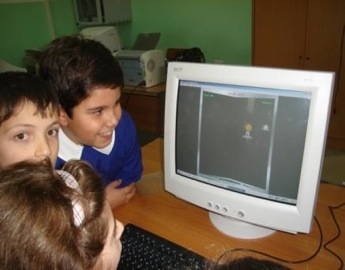 |
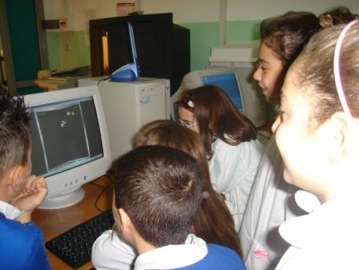 |
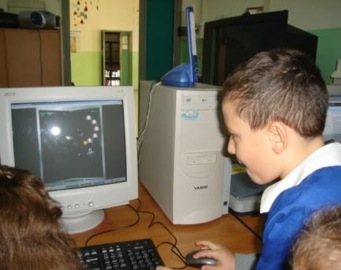 |
Main part:
After playing the game, the pupils write their score on the blackboard and read them out to the class.
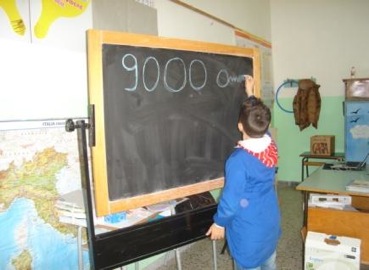 |
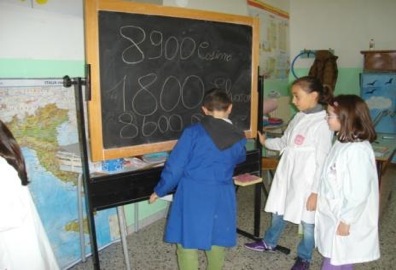 |
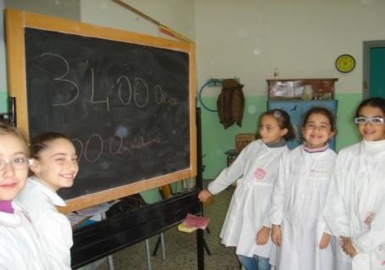 |
Observations:
This activity focused on the reading and writing of numbers found in everyday life.
Lesson 2:
|
Aims:
- To arrive at a better understanding of the decimal positional system.
- To recognise the positional value of the digits.
Materials:
Wrapping paper, ruler, pencil and coloured markers.
Introduction:
The teacher asks the pupils to create a way to register the numbers which resembles the structure of the abacus.
Main part:
Working together, the number chosen is placed in the plan, occupying a square with each of the digits, from the units onwards.
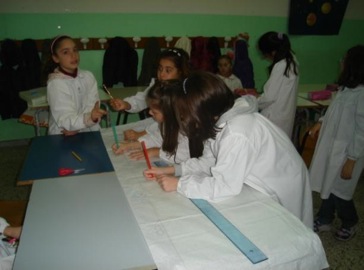 |
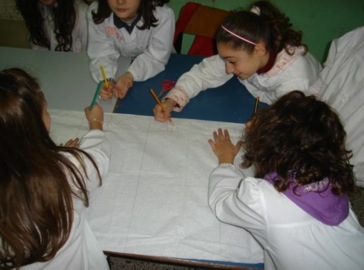 |
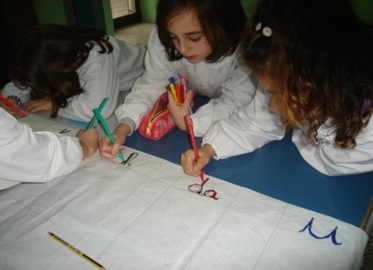 |
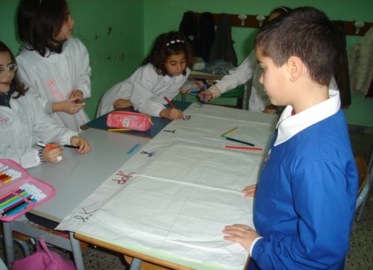 |
Roundup:
Each pupil reads out his or her score and states the value of each digit.
Observations:
The pupils with least difficulties hep those students who feel less confident about reading and writing the numbers, especially about the translation of each digit to its value. (For example, 5 units = 5/7 tens = 70/8 = hundreds 800).
Lesson 3:
|
Aims:
- To count
- To quantify large numbers
Materials:
Scissors, squared paper, glue, string.
Vocabulary:
| abacus |  |
m. a. b. (multibase aritmetical blocks) | 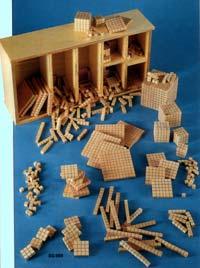 |
squared paper | 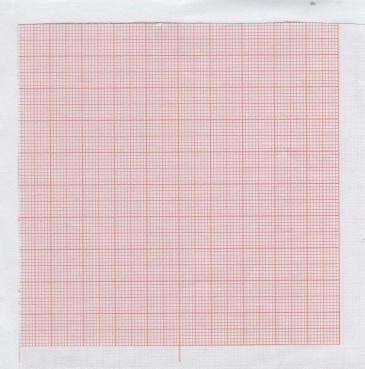 |
Introduction:
The teacher asks the pupils to discover an easy method of representing how many units are needed to form a large number. Some pupils suggest using an abacus, others suggest the use of m. a. b., and one pupil suggests using squared paper because it helps to count large numbers of elements. The other pupils agree with this last idea and begin to work on the task.
Main part:
Each group of 4 or 5 pupils is given a number to represent.
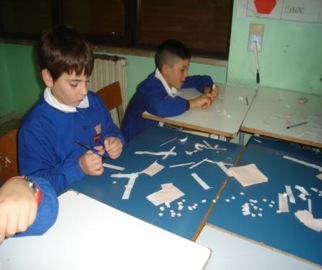 |
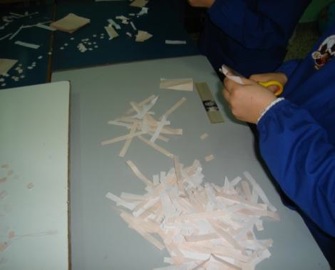 |
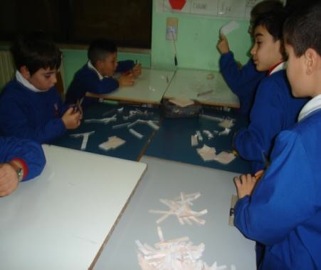 |
Roundup:
The pupils share out the tasks: the first group cuts out the units, the second group the tens, the third group the hundreds and the fourth group the thousands.
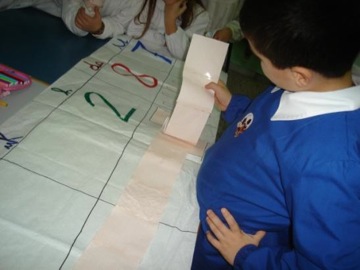 |
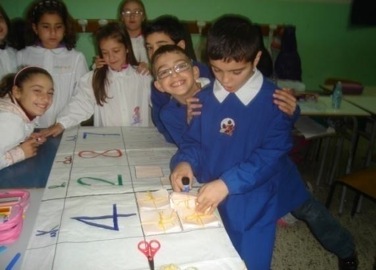 |
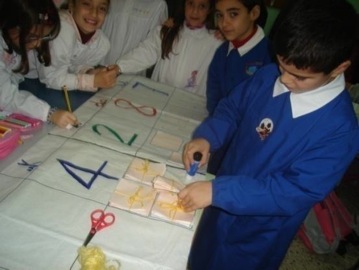 |
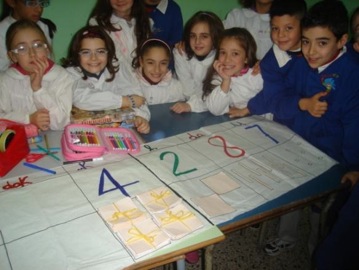 |
Observations:
The activity was useful because it has given the pupils the opportunity to see the representation of a large number without having to use abstract symbols that are not easily understood, especially in the case of those pupils with special needs.
The children found it exciting to see the grat number of units needed to represent the thousands. In the end, they decided to form a strip with squared paper, which they then folded and tied with string.
